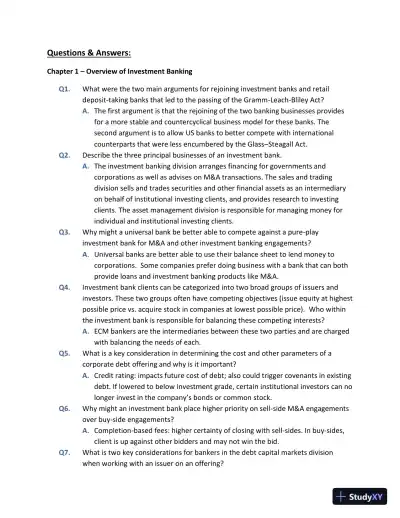Page 1

Loading page ...
Solution Manual for Investment Banks, Hedge Funds, and Private Equity, 3rd Edition is the perfect resource for breaking down challenging problems step by step.

Loading page ...
This document has 42 pages. Sign in to access the full document!